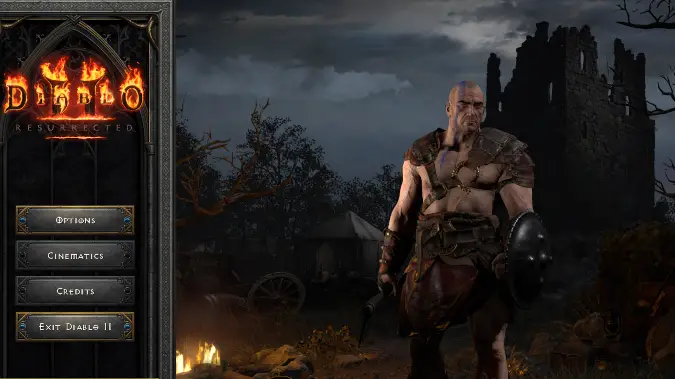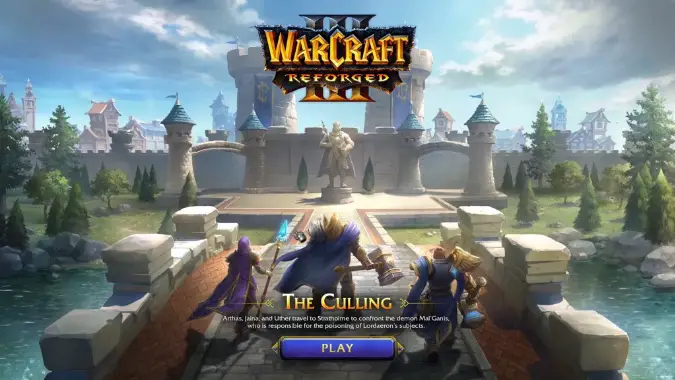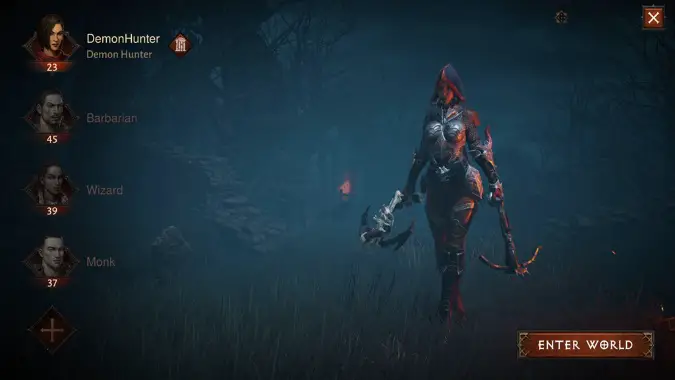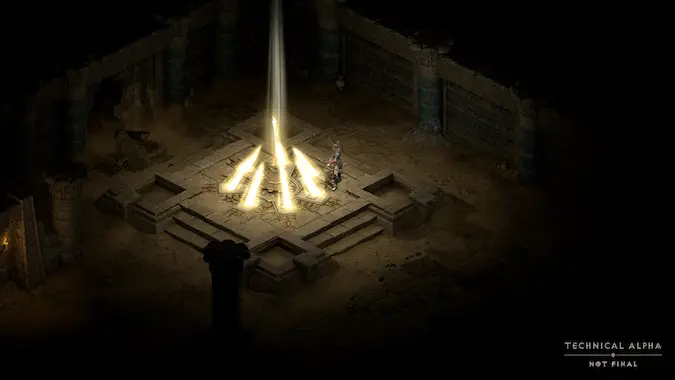What’s the real value of remastering and remaking games?

What’s old is new again as more and more game studios dive into their past catalogs for their next big hits. Blizzard has been a visible part of that trend, both for the better and for the worse. Remasters and remakes can have a lot to offer long-time fans and new audiences when they’re done well. Done poorly, they feel like a waste of time and money.
Why are so many studios pursuing remasters? Is it all about the bottom line or are they just out of ideas? Let’s look at the real worth of breathing new life into an old game, both for players and for game developers.

What are you actually getting with a remaster?
The definition of a remastered game has gone through some big changes very recently. In its simplest form, a remaster is offering the exact same game as the original, with small changes that reflect hardware improvements. That might mean improved resolution or support for widescreen or a few added visual effects. Most commonly, though, this type of remaster includes the original game’s engine and assets with a little extra polishing.
But some projects are actually doing total remakes of old games, often shot-by-shot recreations built from scratch in a new engine and with new assets. Think the 2016 Ratchet and Clank from Insomniac Games or The Legend of Zelda: Link’s Awakening for the Nintendo Switch in 2019. This is the type of updating that Vicarious Visions specializes in, and the approach the studio is taking to Diablo 2: Resurrected. None of the original title’s code will appear in the update, but the team has meticulously recreated the technical assets as well as the ambiance, the mood, and the emotion of the source material.
These days, a game remaster can fall anywhere between those two points. Knowing what kind of project the developers are undertaking is the first step in talking about their value. Even the more minor form of a remaster isn’t a simple matter of flicking a few switches and calling it a day. The visible changes may seem small, but it still takes the whole team to make sure everything will play nicely between old assets and new technology. And obviously, the more involved remakes are totally new games, with the budget and time investment to match.

A remaster that bombed
Poor Warcraft 3 Reforged. It really wanted to be everything to everyone. But part of its poor reception was because Blizzard’s approach toward the game changed over the course of the project. What initially sounded like a total remake turned out to be a strange mix of improved assets and art that looked straight out of 2002. The conflicting messaging about just what Reforged would be meant that most players’ expectations weren’t met and any disappointments about the game felt all the more sharp.
Also, many players felt that Reforged struck a confusing balance between modernization and cleaving to the original. For instance, several controls and UI elements were not changed to reflect contemporary standards. But the modding community, which has been a major part of Warcraft 3‘s player base all this time, got little to no support with the new launch.
The technical issues and bugs in this project were the last big let-down for players. Remember, I said remastering isn’t just pressing a couple different buttons in-engine. Here’s the proof.

A remaster that succeeded
In contrast, the recent Mass Effect Legendary Edition made more successful choices where Warcraft 3 Reforged fell down. BioWare was clear from the start about what would be in the launch and they delivered. This was a real remaster rather than a remake, with the same game guts as the original trilogy under the hood. They made smart decisions about which assets to change and how; any big shots of the galaxy full of glittering stars are especially gorgeous.
But they were willing to make bigger changes to make the game much more fun. In the first game, the UI for your party’s health bars is no longer the slanted travesty that it once was and the Mako is actually drivable and won’t make you want to throw your controller. But they left the selection wheels for weaponry and abilities, even though they’re a clunky solution that other games have found better approaches for, because that’s part of the experience of Mass Effect game loop.
There’s no magic formula to determine what the right balance is for a particular game. Both Warcraft 3 and Mass Effect were great candidates for a remaster. They were iconic titles in their genre. They had devoted audiences that were excited about updates to the titles they love. But it’s an art as much as a science to hone in on what’s iconic and beloved about any particular game. Each remaster will have different priorities and needs to most resonate with a modern audience. The closest I can get is that a remaster should ideally be treated like any other game project. Give it the time and care to be as true to the creative vision as possible, and you’re probably going to wind up with a success.

Debunking the cash grab
I’ve used the word ‘success’ several times now, which means it’s time to address the elephant in the room: Money. The phrase “cash grab” comes up a lot around games, and especially remasters. It’s the attitude that a studio or publisher is trying to take advantage of players by offering a lackluster product purely in the interest of profits.
Time to burst that bubble.
The simple truth is that, even at the most passionate, creatively-driven places, studios do want you to spend money. They need you to spend money. And the people who oversee finances at bigger operations may need to see some projects rake in lots of cash in order to support any riskier new ideas that aren’t guaranteed to turn a profit. This gets even more complicated with Blizzard games, because the studio is now tied to the massive Activision engine and all the additional pressures of being part of a publicly traded company. But even in the pre-Activision days, I guarantee you that Blizzard still wanted and needed players to spend money.
That said, the idea that most remasters are a soulless move to make bank on nostalgia is a pretty cynical one, because the type of ground-up, total remake that’s becoming more common is not a cheap decision. The developers are still making an entirely new game. Sure, they have a head start on some areas that won’t change; story and dialogue probably stay the same, unless there’s problematic content that needs to be addressed. But even the process of revisiting and analyzing an original work to decide what to keep would require a prototyping period potentially as involved as coming up with an original idea.
That’s not to say there isn’t a solid business reason to bank on a remaster rather than a new idea. We’re seeing it in other media, with television and movies also looking at reboots and reimaginings to be their surefire hits.
There is still room for new ideas to become icons, for franchises to experiment and grow. Breath of the Wild completely upended what a Zelda game could be. Assassin’s Creed has been a blockbuster as a stealth parkour game and an open-world RPG. But it takes time and some inevitable failures to workshop something new into something great. And too many games that flop means the end of a studio and its experimentation. A larger developer like Activision will move teams onto their reliable IP, while indies might stop operating altogether.

We know what we like and we like what we know
For game franchises that have been around long enough to create nostalgia, remasters are also a way to better serve what can be a divided audience. Diablo is a prime example of this. Many of the old guard of players have longed for ‘the good old days.’ D2R is exactly what they’ve been clamoring for. Diablo‘s new guard, with less history in the series, might be more excited by Blizzard going in more adventurous new directions with what a Diablo game can be, including moving onto mobile. For as long as this high-wire act can be maintained, everyone who plays Diablo can be happy.
Think about some of the most common complaints levied against AAA video games. Critics and players alike compare them to our established favorites. Fallout 4 wasn’t as good as The Witcher 3. Anthem wasn’t as good as Destiny. No traversal puzzle game will ever live up to Portal. Once a creative work settles into our minds and our culture as the standard-setter, any future games in the genre get judged against it, no matter how fair the comparison is.
Big industries are less likely to take risks, and nostalgia is reliably valuable. But the average player is just as risk-averse. With only so much time and money to spend gaming, we’re just as likely to stick with the series we know, the games we already enjoy.
I don’t think the wave of remasters is a bad thing for the industry. It’s simply a sign that gaming has been around for long enough and changed enough that there is demand to return to cult classics and fan favorites.
Please consider supporting our Patreon!
Join the Discussion
Blizzard Watch is a safe space for all readers. By leaving comments on this site you agree to follow our commenting and community guidelines.
 @AnnaGetsPithy
@AnnaGetsPithy



